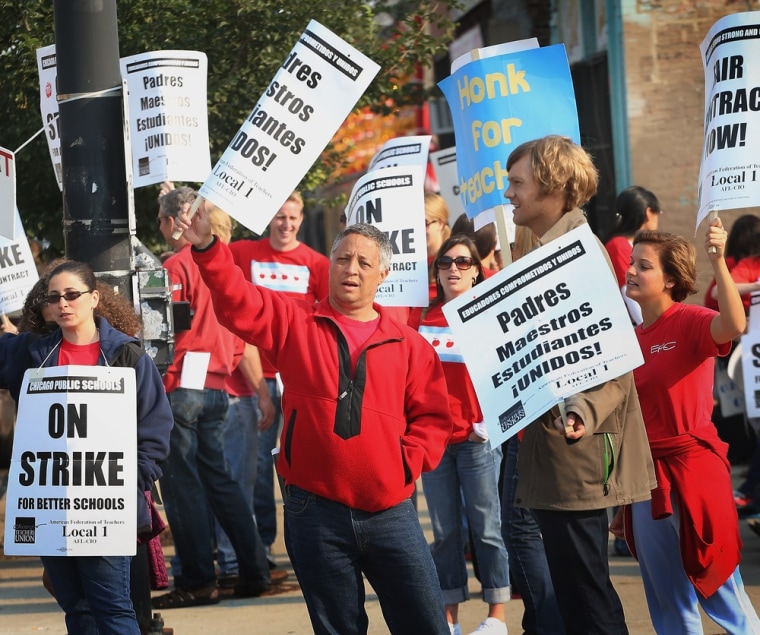Remember the Chicago teachers strike? In September, the Chicago Teachers Union went on its first strike in a quarter of a century, and successfully turned a local labor action into a referendum on the national erosion and charter-ization of public education. In the end, they won some significant concessions from Chicago Mayor Rahm Emanuel; but—perhaps more importantly—they also maintained a remarkable level of member solidarity and militancy, and carried their momentum into future battles against the Emanuel administration.
Last week, In These Times' Micah Uetricht and Jasson Perez examined the roots of the Chicago teachers' remarkable strength. The key factor, in their words, is this: "[T]he CTU is one of the most vibrantly democratic union locals in the United States."
In other words, it's the union's rank and file who primarily drive the union's strategy and activism—not leadership or staff. And it's not alone. In fact, it shares this feature in common with some of the other more impressive organizing fights of the last several months: notably, the Walmart and fast food strikes. Both of those ongoing campaigns are largely driven by consistent, low-level worker activism.
Compare that to the strategy SEIU has used for organizing hospitals and nursing homes on the West Coast. In 2007, the Seattle Times reported that SEIU Local 775 had inked a secret deal with several nursing homes in Washington state, under which those nursing homes "pledged to bless the union's organizing efforts." In return, Local 775 promised to lobby the state for $60 million in additional funding for the companies. But they didn't stop there.
As part of the 10-year agreement, SEIU Local 775 promises no strikes and agrees to let the nursing-home operators—not the union or workers—decide which homes are offered up for organizing. The union also agreed not to try organizing more than half of a particular company's nonunion homes.
In other words, Local 775 aimed to increase its membership by cutting deals with management, rather than mobilizing workers. Advocates of this sort of anti-organizing might point out—with some justice—that it is exactly such tactics which make SEIU "the fastest growing union in North America" at a time when labor density as a whole is on the decline. Walmart strikes might be inspiring, the argument goes, but they're also fundamentally quixotic; if you really want to grow union membership, back room politicking is a safer bet than prolonged strikes in a hostile legal and economic environment.
Of course, growing membership is different from growing a movement. The CTU, OUR Walmart and the Fast Food Workers Committee have all chosen to prioritize movement building over quick and easy elections or contract negotiations. In part, that's because of their differing circumstances: CTU, being primarily a public sector union, doesn't need to place much of a priority on growing membership. And OUR Walmart and the FFWC really have no other choice than to focus on community partnerships and movement building, as they stand virtually no chance of winning elections or management concessions at their current strength level.
However, extenuating circumstances aside, the CTU is a notable object lesson in the power of grassroots militancy. Their solidarity, community ties and uncompromising attitude didn't just win them short term concessions; it also forms a positive feedback loop, helping them maintain cohesion in the face of future threats.
Besides, isn't this what unions are supposed to be about? As I've argued before, organized labor isn't just a mechanism for raising wages or winning better benefits; it's an instrument, first and foremost, of worker control over the conditions of their own labor. If workers aren't active participants in union life, then the very idea of unionism is weaker for it.
